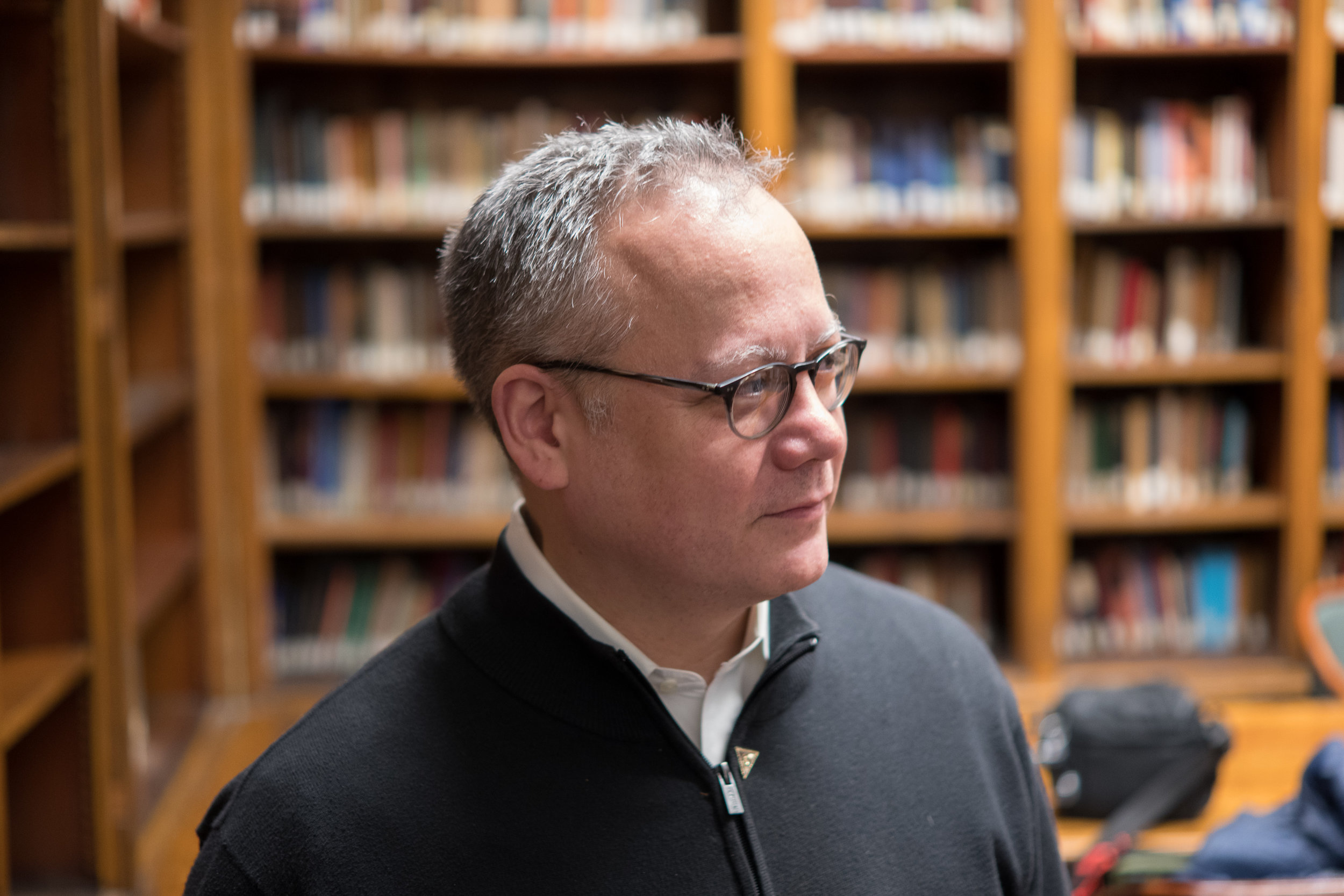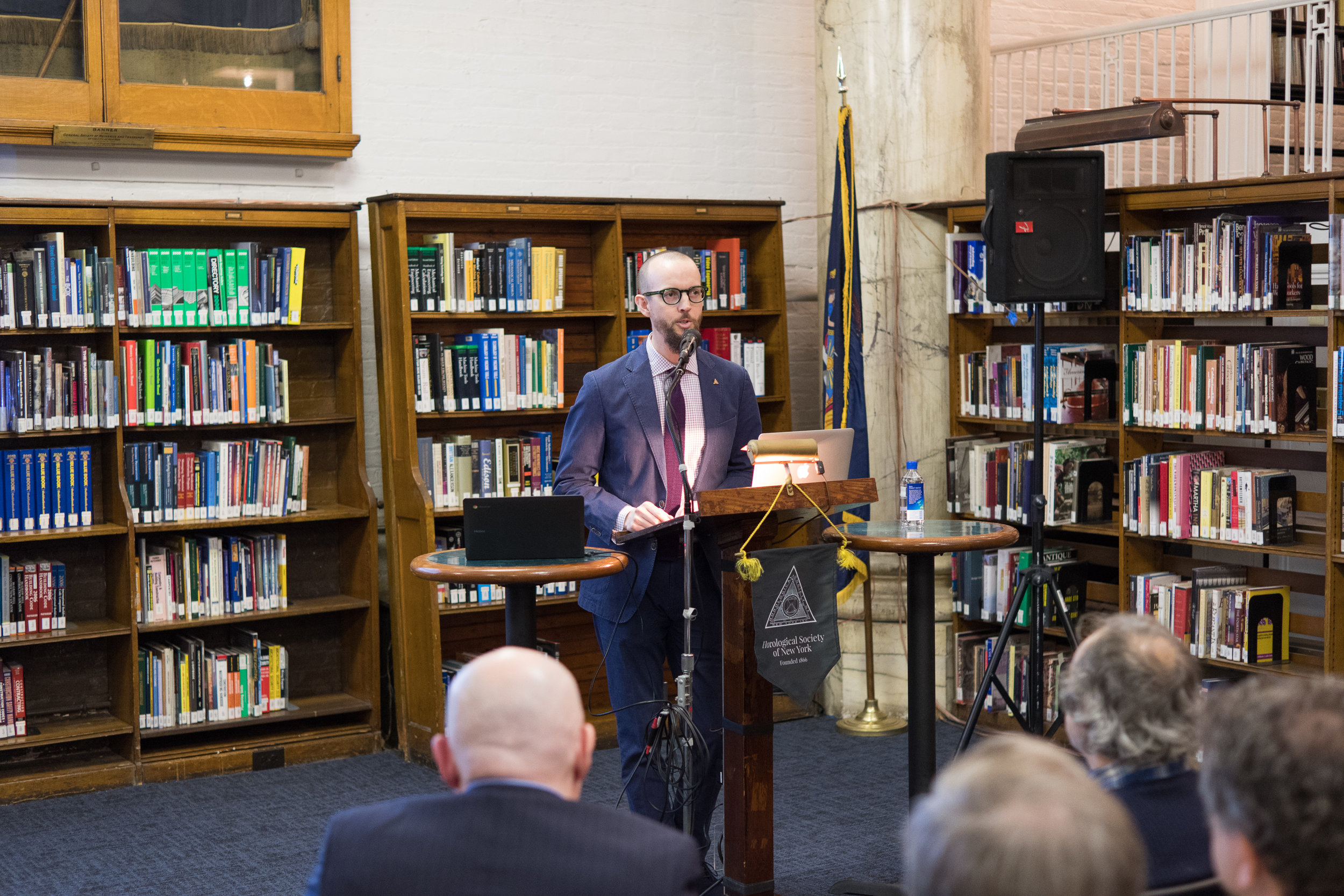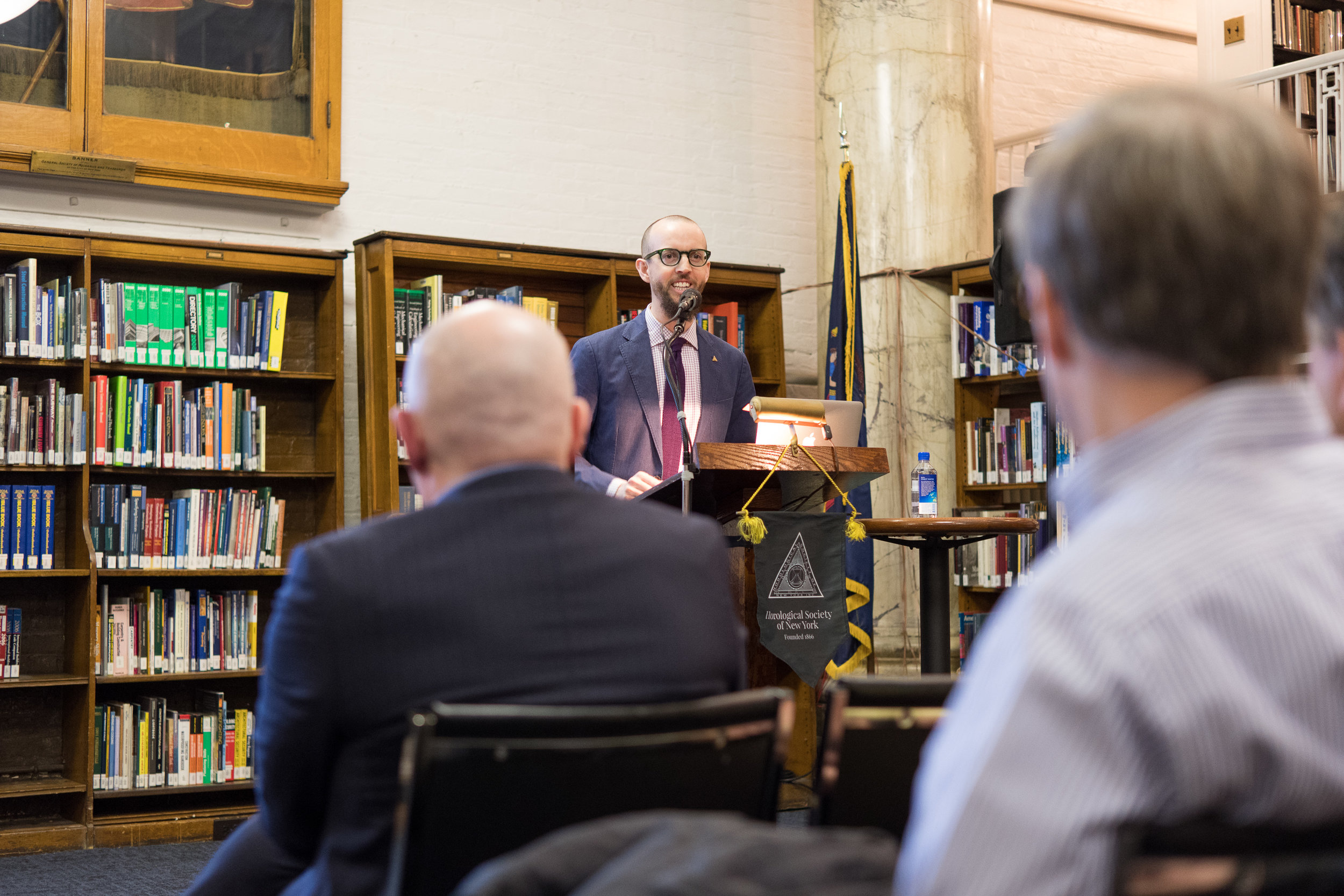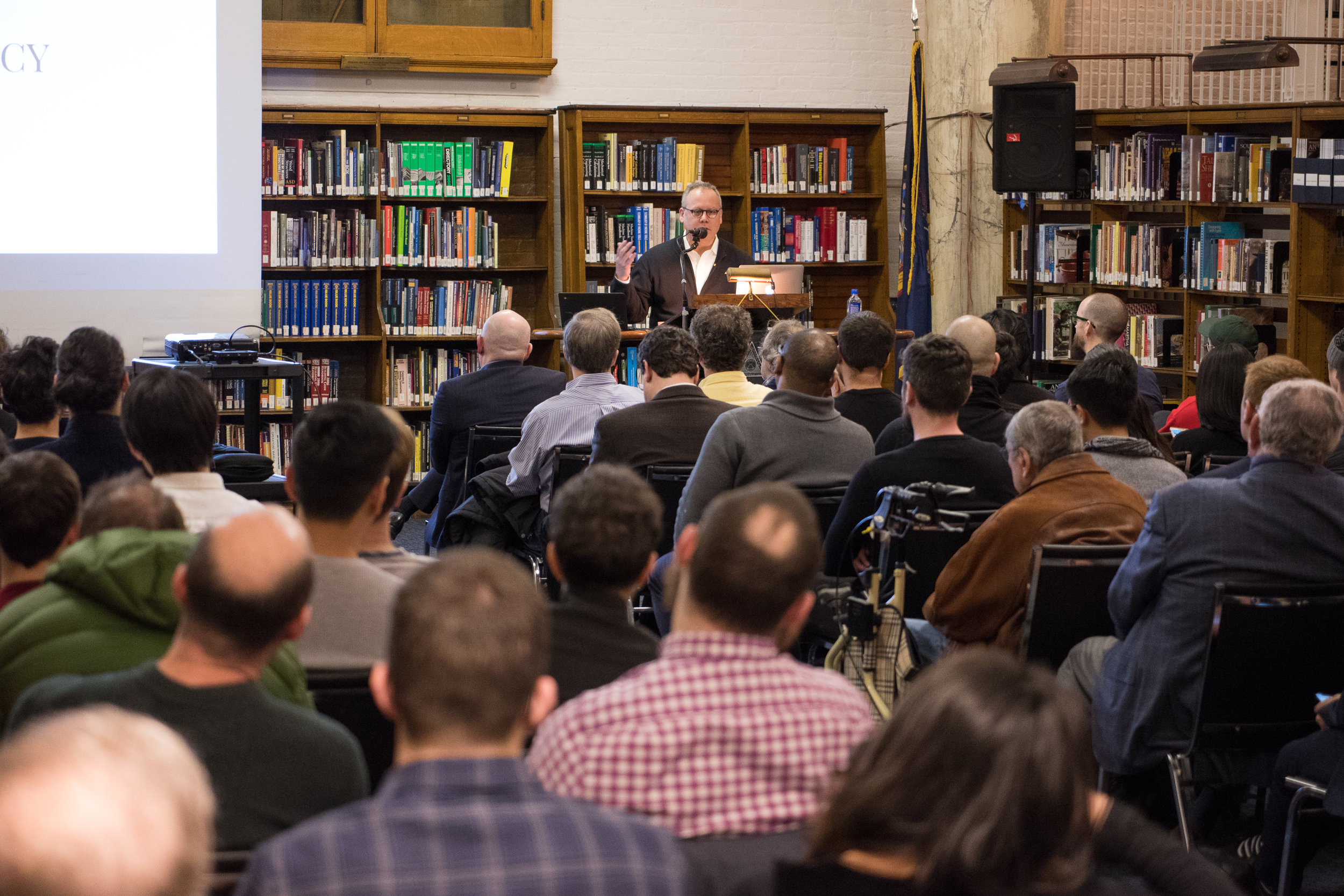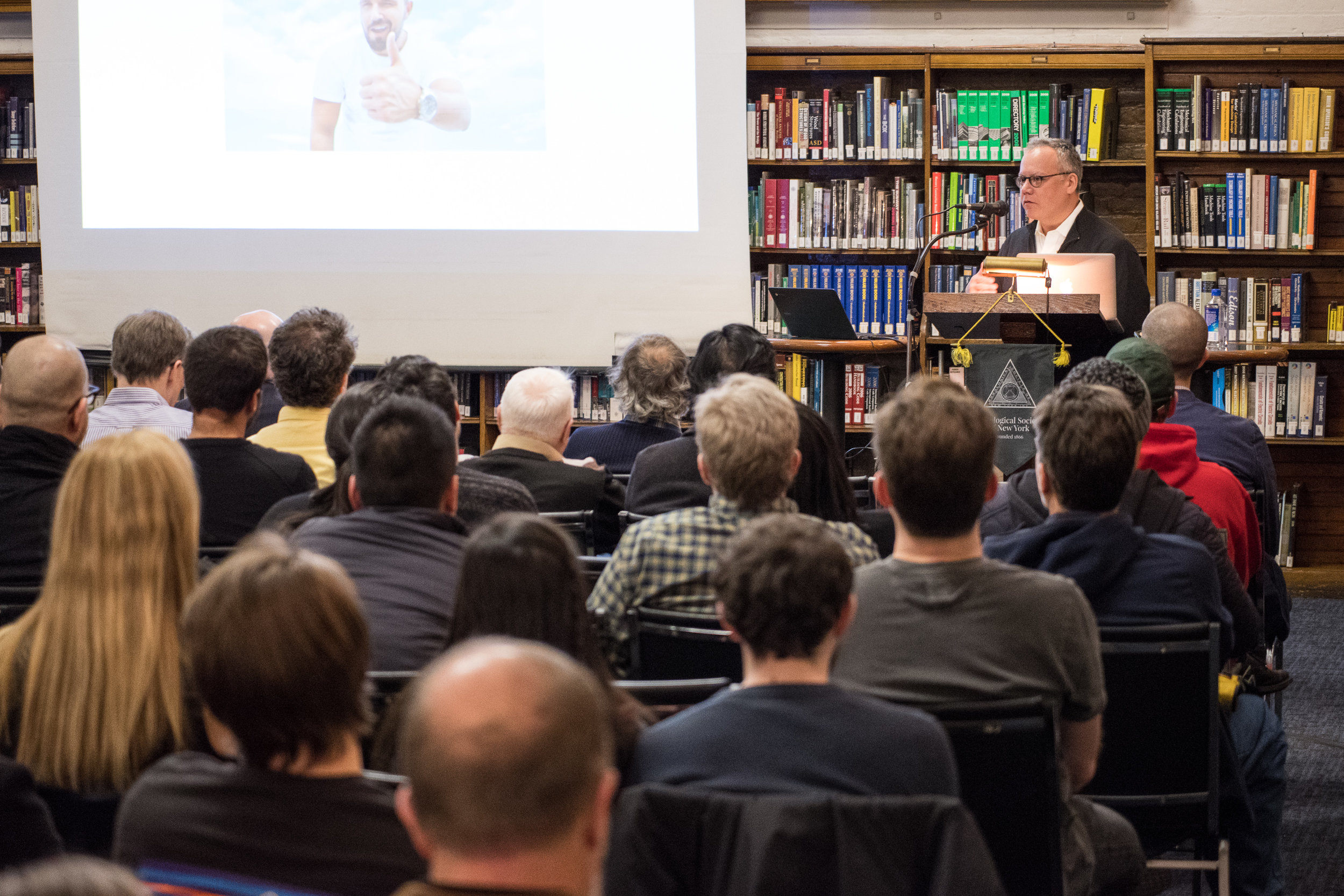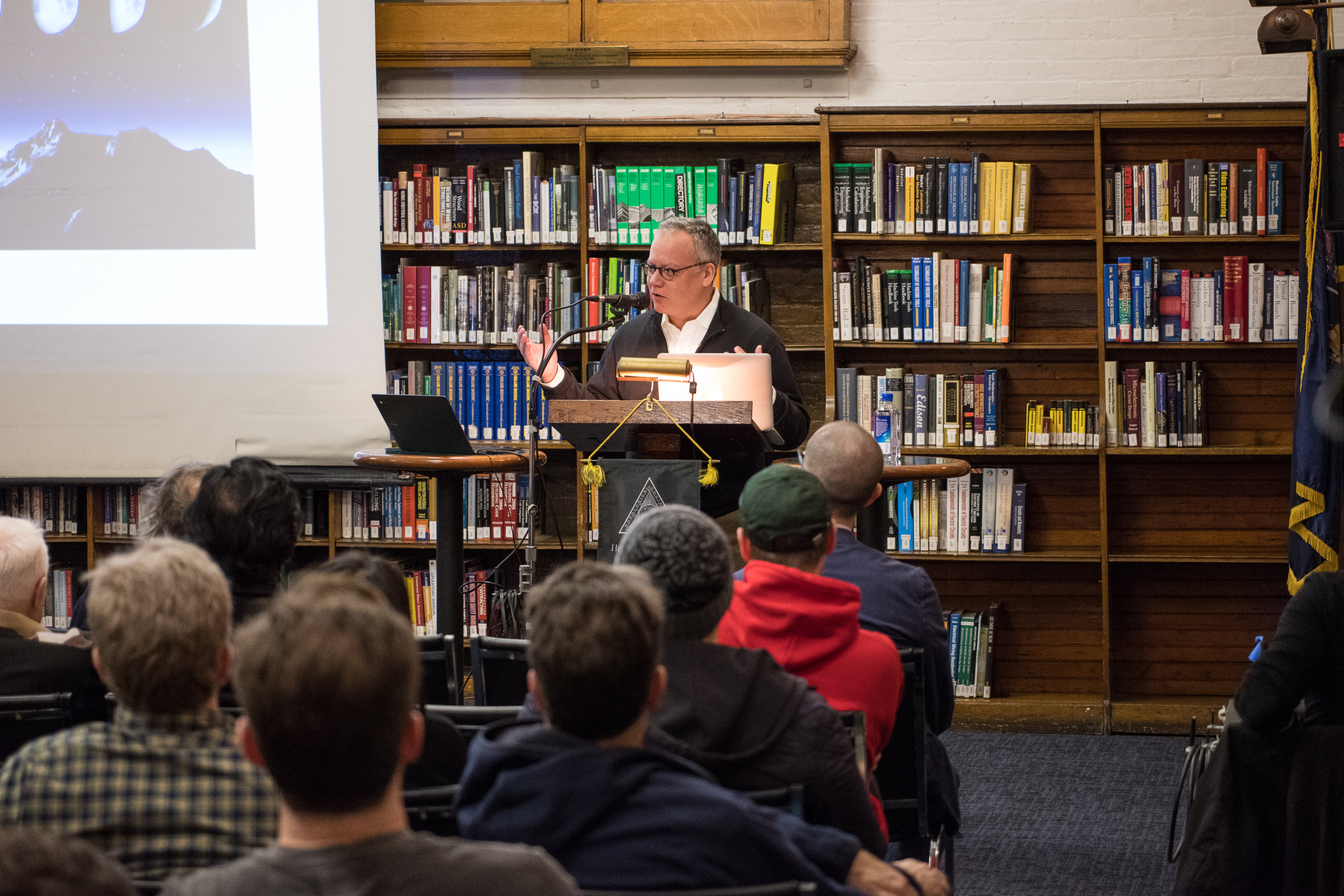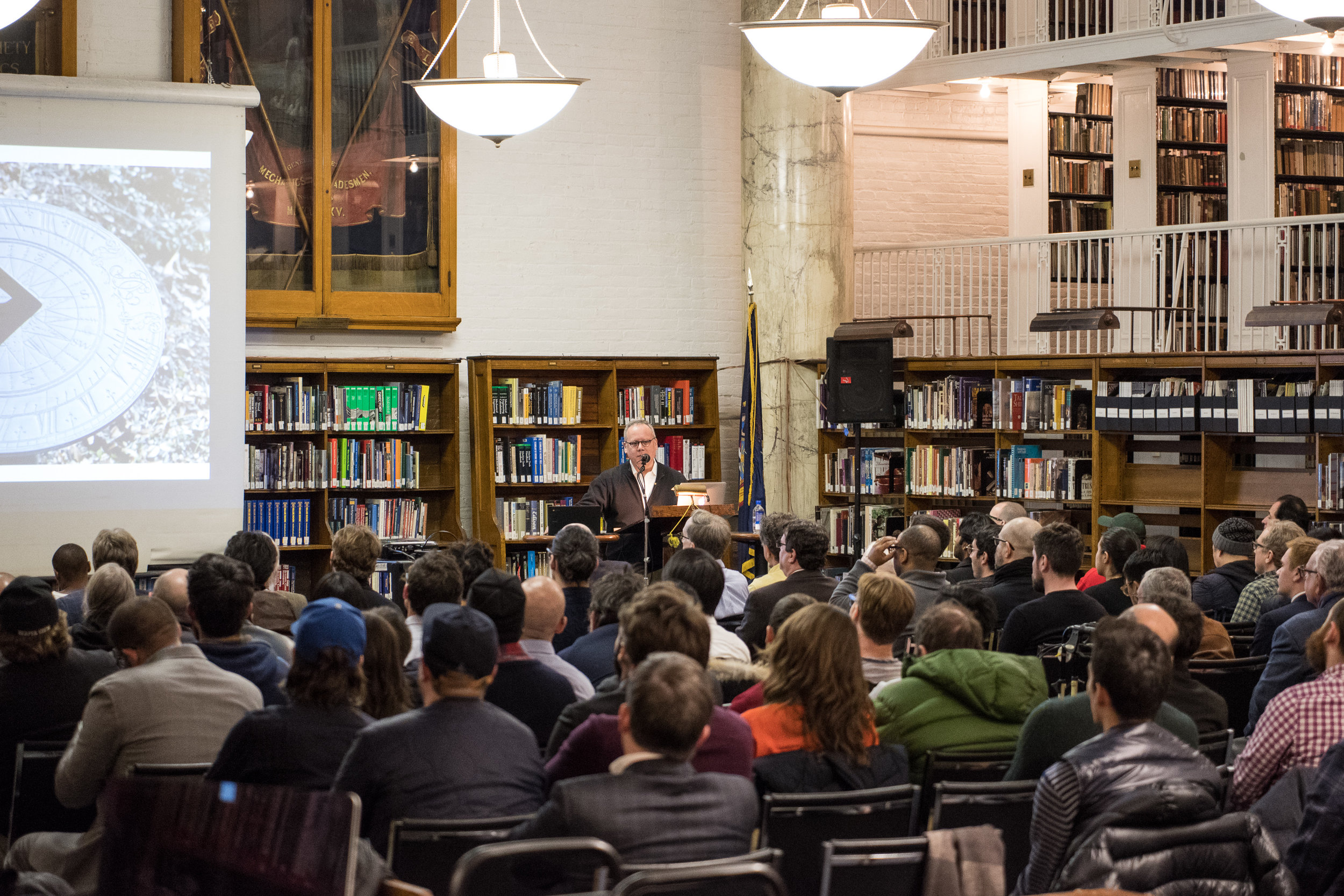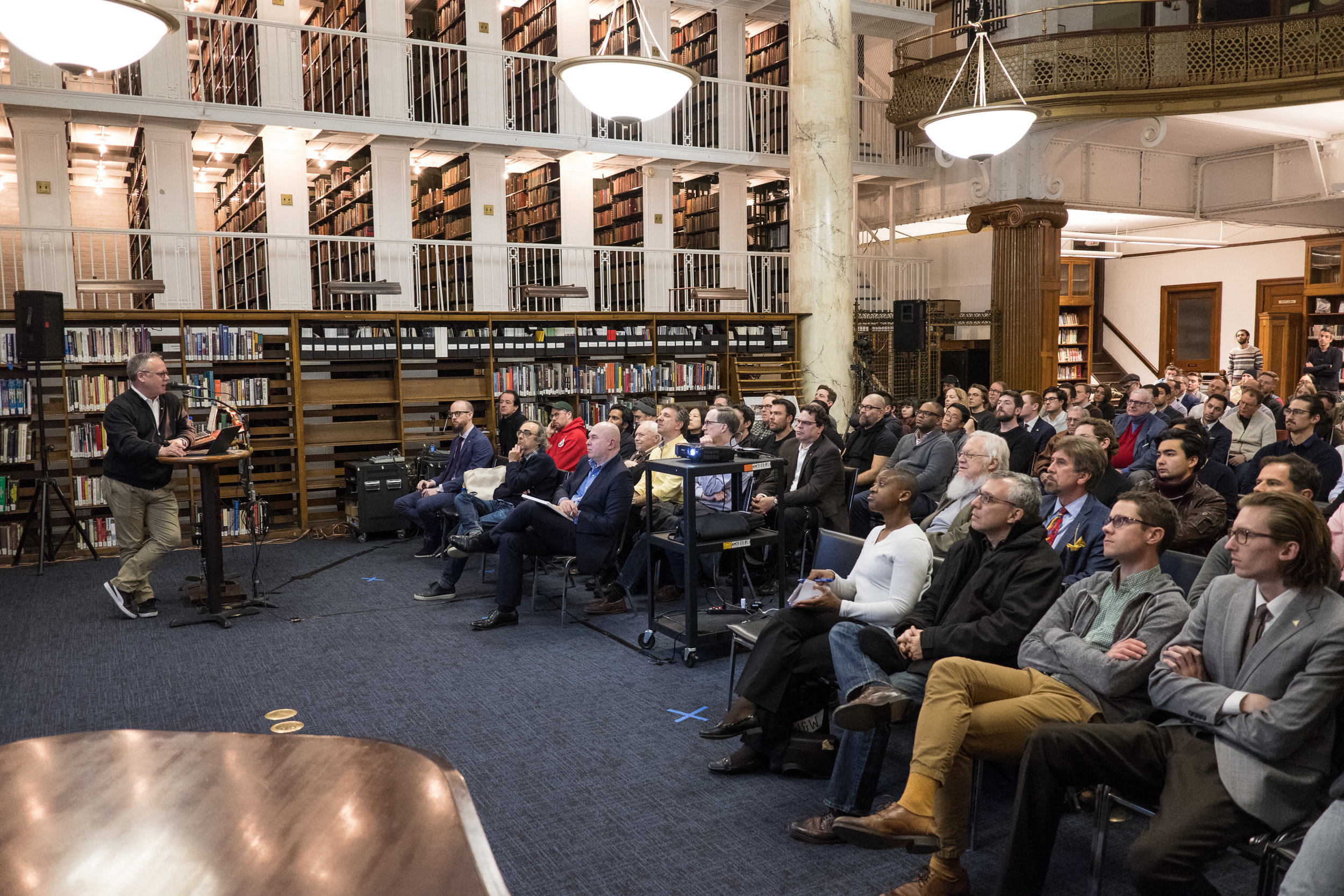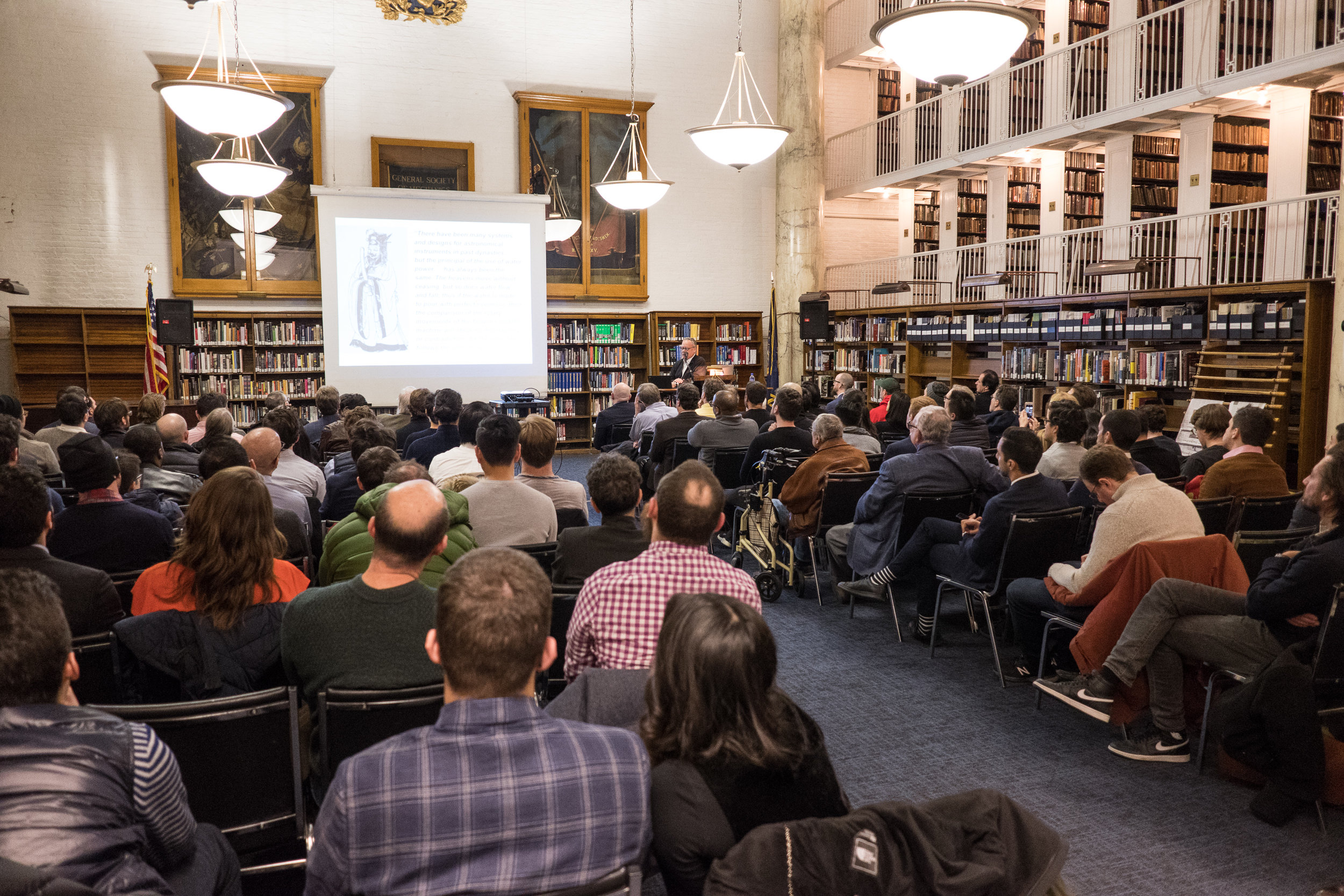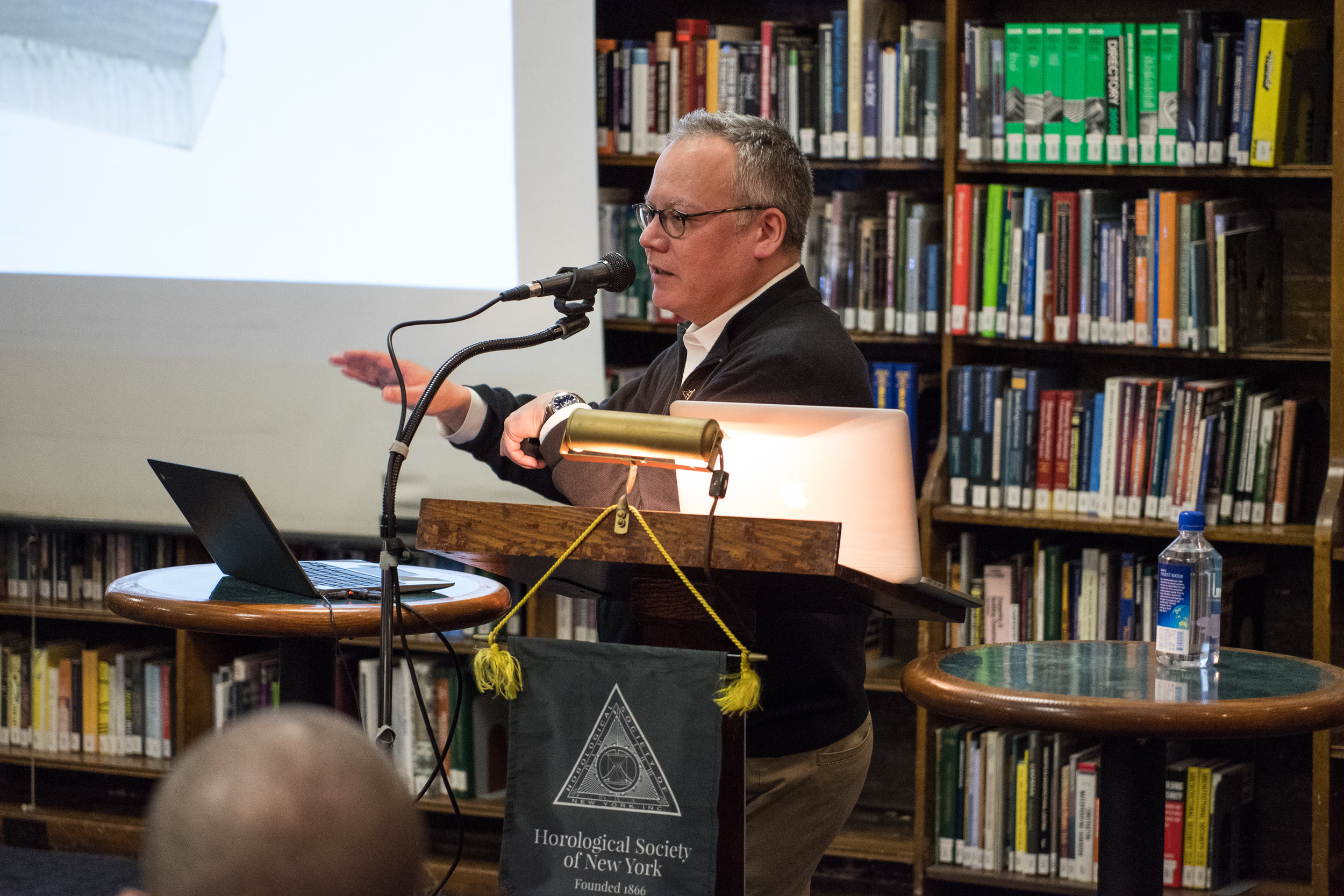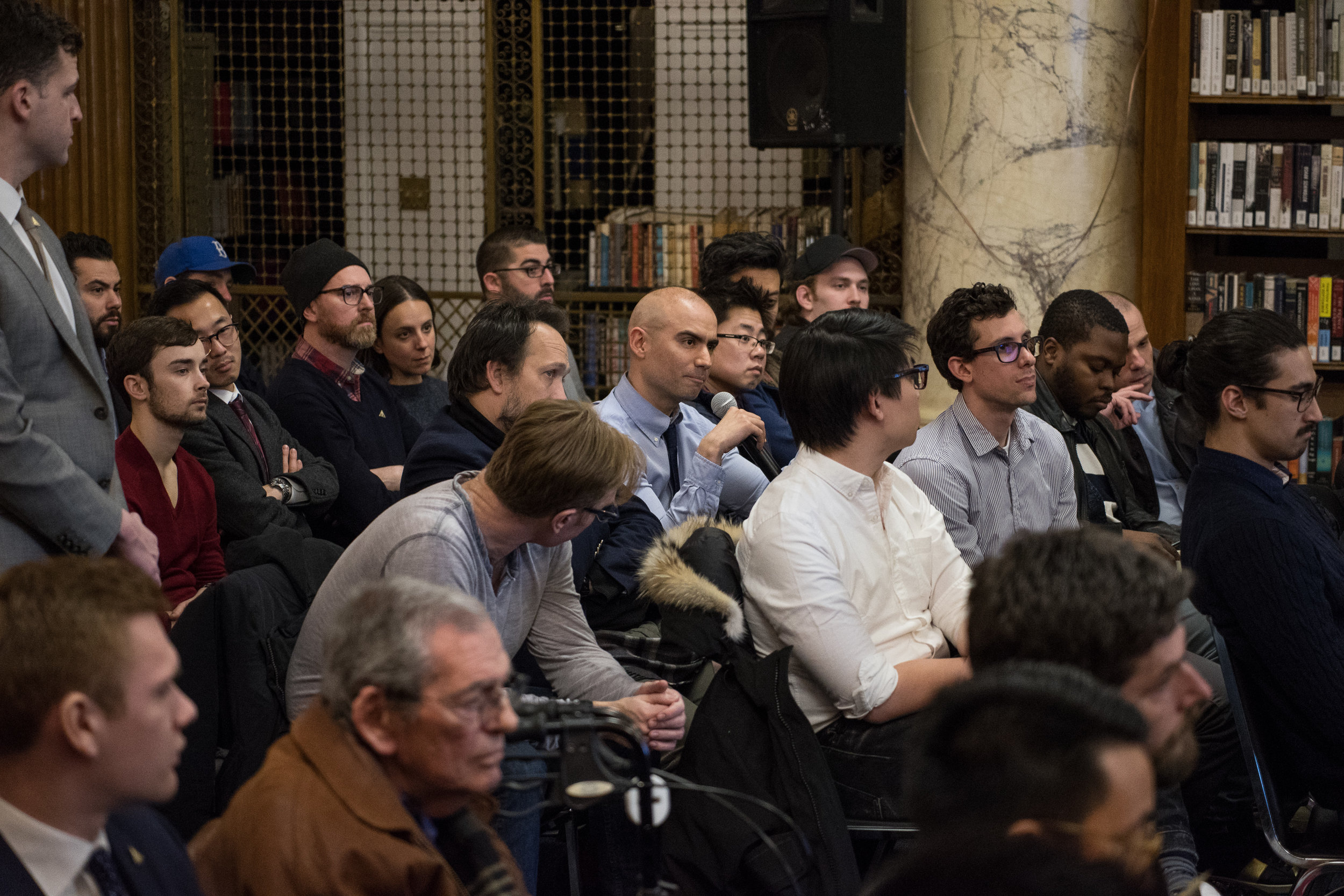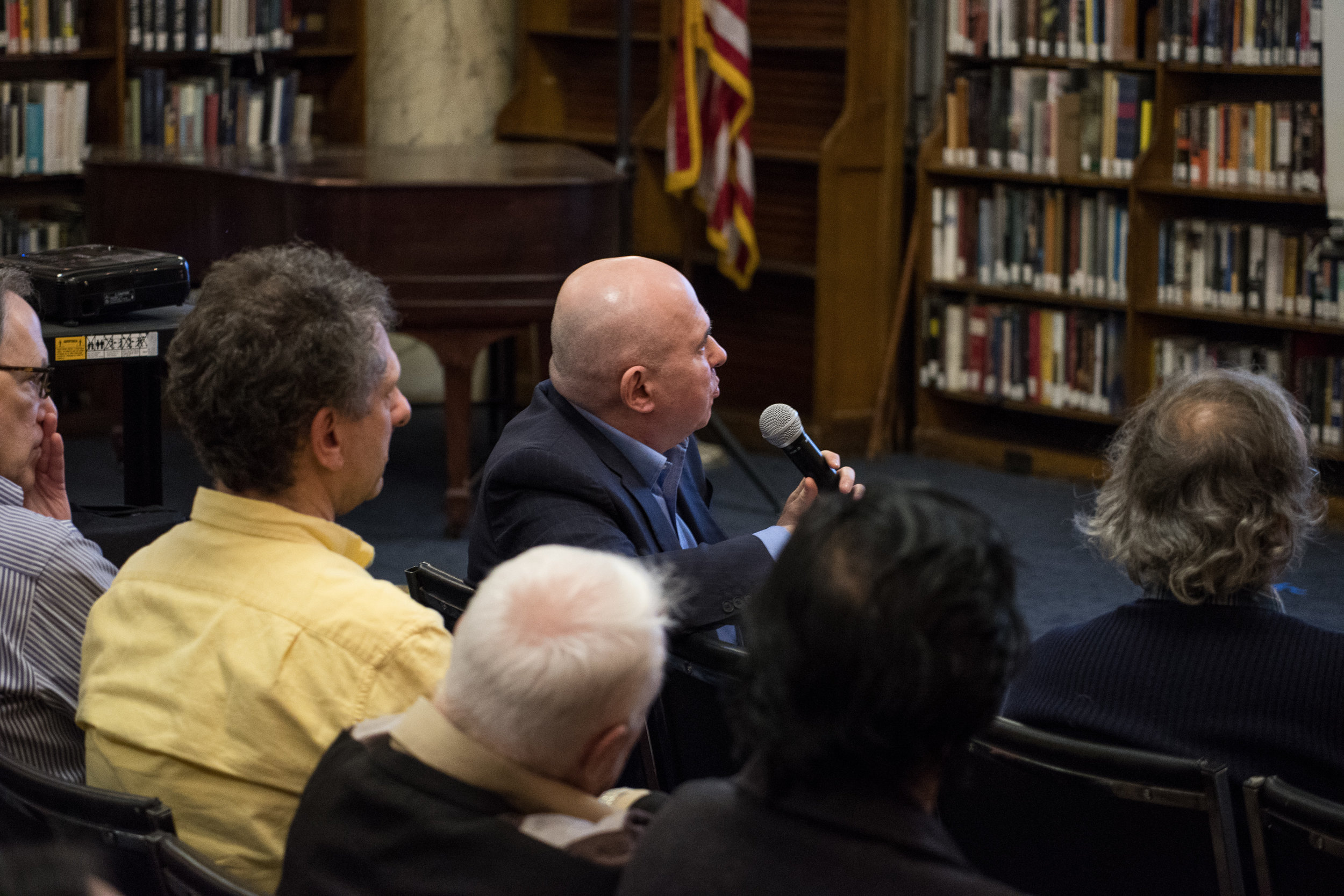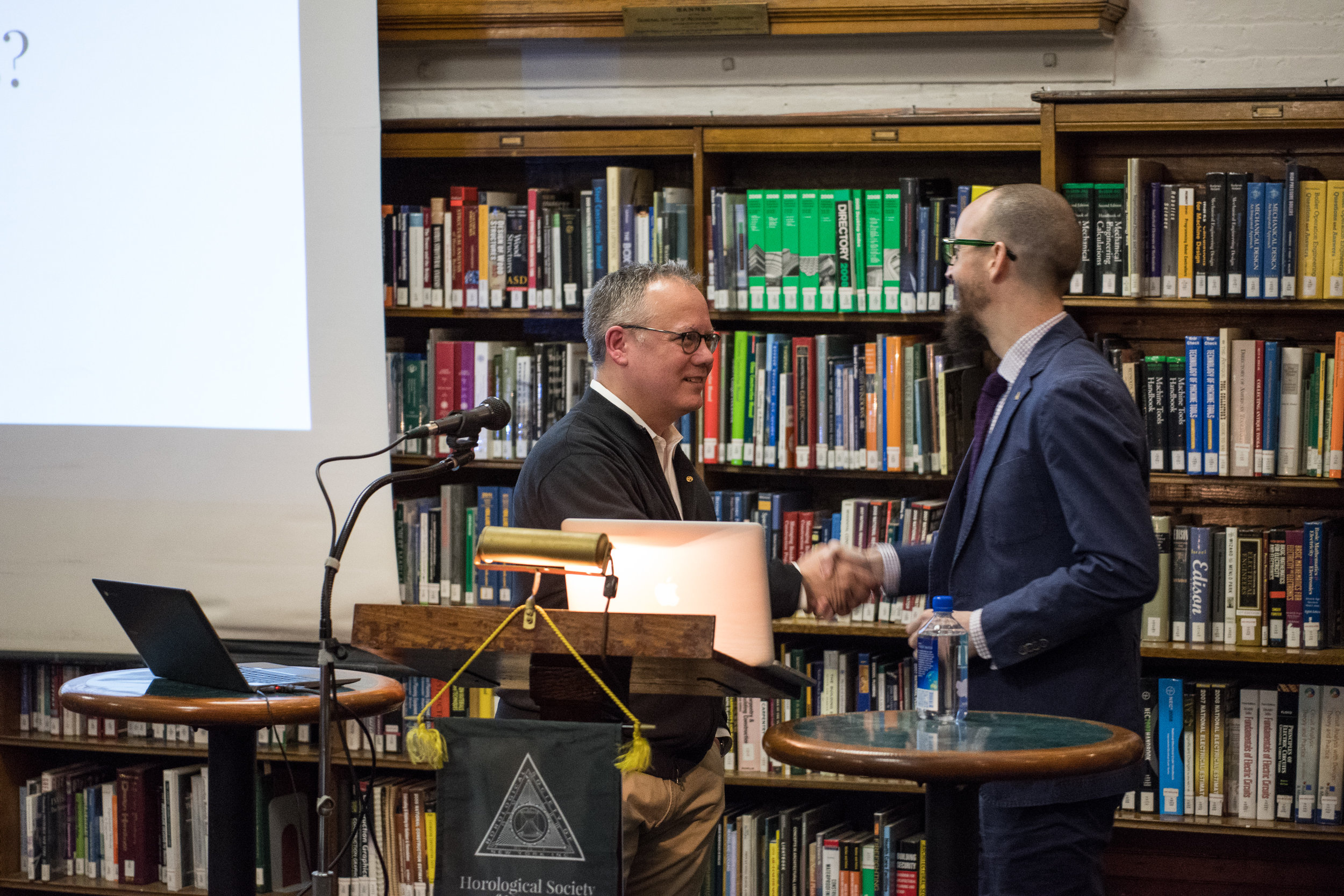Meeting Recap: The Essentials Of Precision Timekeeping
Jack Forster, Editor-in-Chief, HODINKEE
February 5, 2018
Video recordings of meetings are available to HSNY members.
Ever since the dawn of time, mankind has tried to keep track of it. Although timekeeping devices have evolved, from the water clocks of antiquity to the atomic clock today, the general principle behind them is the same: that they be correct. At the February 5, 2018 lecture before the Horological Society of New York, Jack Forster, Editor-in-Chief of HODINKEE, traced the origins of precision timekeeping, and delved into what makes it work. The first step in understanding precision timekeeping is to understand the difference between precision and accuracy. While we often conflate the two, they are in fact quite different. In the simplest terms, accuracy is the conformity to a time standard. However, in horology, precision refers to rate or frequency stability. For a timekeeper to be precise, it must have a stable rate.
Early efforts to track the procession of time relied on continuous processes, such as the movement of heavenly bodies or the flow of water. An example of an early timekeeper that tells time from the movement of a heavenly body is, as one might expect, a sundial. Ancient Greeks told time with water clocks, which could have been as simple as a bowl of water with lines drawn on the inside. As time progressed, timekeeping devices became more sophisticated. This brings us to the second method with which time is measured: oscillatory processes. An example of this would be the swinging of a pendulum in a longcase clock.
A pendulum is a harmonic oscillator, in which a mass, such as a weight, experiences a restoring force proportional to the driving force. Harmonic oscillators have a natural frequency which makes them suitable for timekeeping. In a pendulum, the restoring force is gravity, which is constant at a given altitude, making it ideal for timekeeping. This is achieved in modern watches and clocks by the escapement. For all our advances in horology, modern timekeepers are still plagued by the same issues that our ancestors dealt with. Temperature, magnetism, positional variation, and changes in atmospheric pressure can affect accurate timekeeping. The essence of modern horology, therefore, is combating these elements in order to keep timekeepers accurate... and precise.
HSNY thanks Jack Forster for his fascinating lecture!
Submitted by Christa Chance, Recording Secretary, HSNY
